Although Teresa Oaxaca is largely focused on perfecting her techniques and aesthetic, her body of work already demonstrates her immense talent, eclectic taste, and unreal potential.
Drawing heavily from past traditions and costume, the paintings of Teresa Oaxaca have both a modern flavor and a timeless aura that is truly captivating. “I am as ever concerned with capturing emotions and feelings and communicating those through my subjects,” writes Oaxaca. “I am interested in showing the beauty of the world around me and evoking a sense of joy, wonder, and seriousness.”
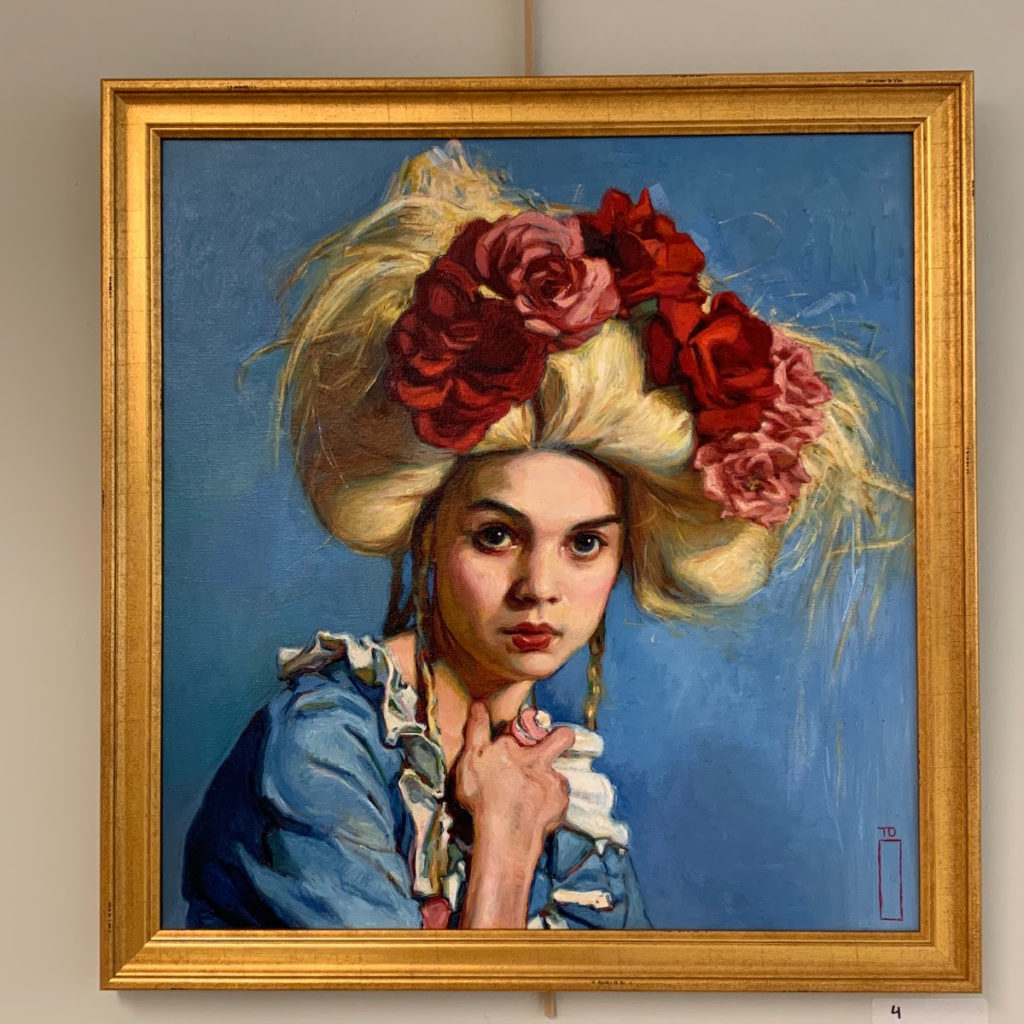
Joy, seriousness, and wonder are indeed apropos when considering “The Black Pierrot.” Among a sea of dolls, teacups, and flowers lies a pensive figure with face painted in white, with black around the eyes. The stoic figure looks out at the viewer with an intensity and power that nearly feels intrusive, as if it is peering into our deepest emotions. The rest of the figure is surrounded by an arrangement of colorful objects that appear to grow or exist organically.
Oaxaca suggests, “Frequently my compositions are spontaneous. When a person comes to me, they occupy a space in my mind. Arrangements form from there until — with excitement — I see the idea I have. The design is both planned and subconscious. For this reason I surround myself with Victorian and Baroque costume, bones, and other things which I find fascinating — I want subject matter to always be at hand.”
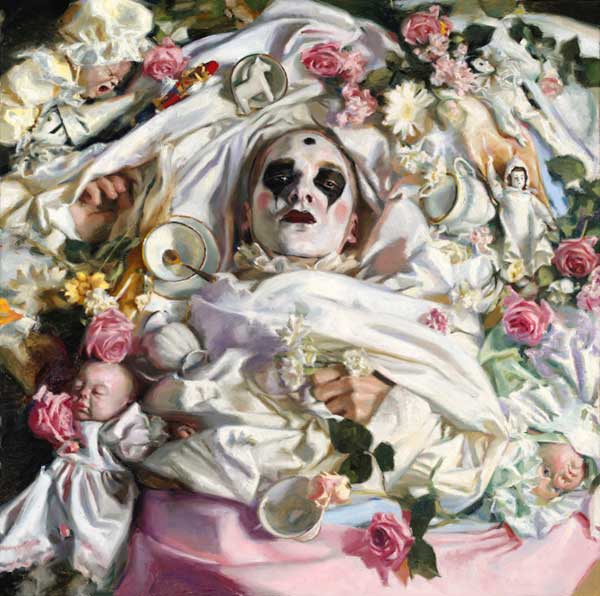
While some might find Oaxaca’s use of Victorian and Baroque costume, along with clown-like facial paint, unusual, Oaxaca sees it as part of an established tradition. She suggests, “I was mentored in the 19th-century tradition of art, a period which looked back and leaned heavily upon the past. The artistic ideal then was not to reinvent the wheel every day or to deconstruct, but to add to the culture. The dead, as it were, had a very real impact on the present. I like to think that my interest in wigs and costuming of other eras is part of that tradition.”
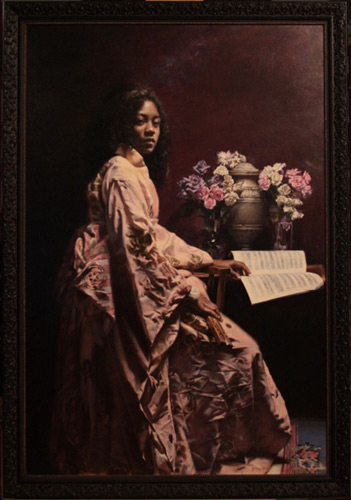
Recently, Oaxaca has pushed herself to “stay fit” with her drawing skills. “The drawings stand on their own and serve to loosen my hand and give my eye a rest from a long painting project,” she says. “I draw and paint to make finished works. I like to alternate between the two.” In fact, so skilled is Oaxaca with her drawing that the artist has established regular workshops around the country focused on improving techniques with charcoal and portraiture.
Oaxaca’s prowess in portraiture extends to paint as well. “Kazumi” is an exceptional example of the artist’s outstanding talent in this time-honored genre. Presented seated and full-length is a stoic African-American sitter. Lit from directly above, the picture is dominated by the lavish kimono robe adorning the subject. Oaxaca’s ability to capture the light as it falls on the silky texture is absolutely stunning. Every fold, wrinkle, and stitch is captured with acute observation. While the robe occupies a large portion of the picture, the face of the sitter is magnetic as well — her confident, natural visage radiates from the surface. Next to the subject sits a table with vase and floral arrangement, which also serves as evidence that Oaxaca is well versed in still life.
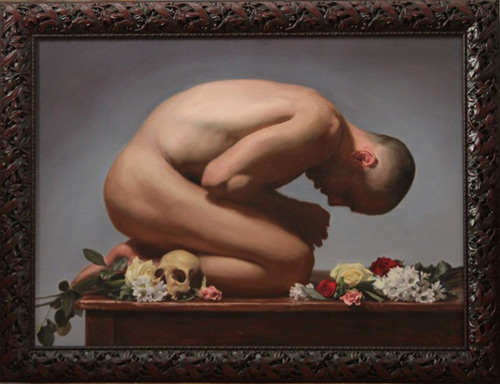
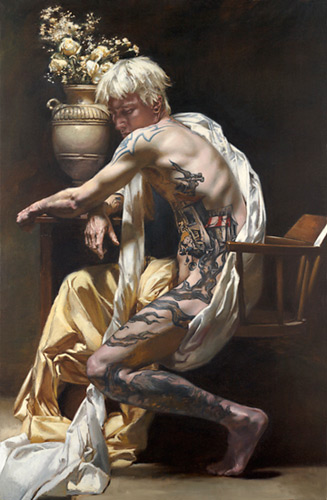
To learn more, visit Teresa Oaxaca.
Teresa Oaxaca has also demonstrated at the Figurative Art Convention & Expo
(read more). Join us for the next amazing event > Realism Live: A Global Virtual Art Conference.
This article was originally published in 2016 by Andrew Webster.
> Sign up to receive Fine Art Today, our free weekly e-newsletter
> And click here to subscribe to Fine Art Connoisseur magazine, so you never miss an issue

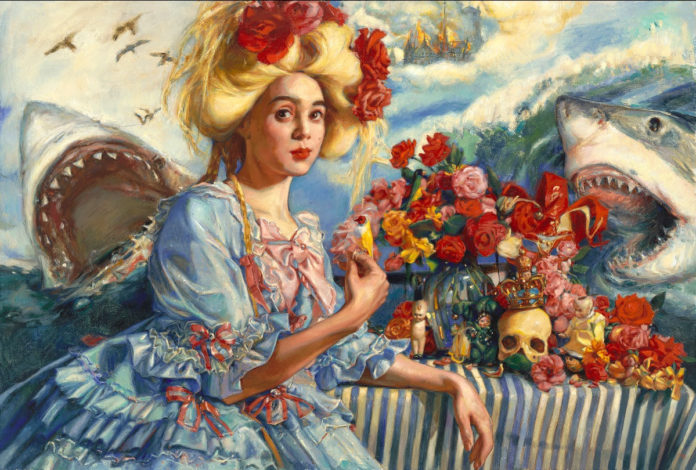







It was always a pleasure to see Teresa copying at the National Gallery in DC. Her copy of Jan Lievens’ Bearded Man with a Beret (not on view) was spot on, a reason they don’t allow same size copies to be painted, and to see her in black amongst the Frans Hals et al was stunning.
I think Thomas Cole’s The Voyage of life in gallery M-60 lends something to the title, and John Singleton Copley’s Watson and the Shark in M- 60 B ( main floor of the west building, not currently on view) lends something to the shark images in her The Journey of Life. Those shark poses look awfully familiar though she’s corrected Copley’s incorrect shark anatomy.
I was an exhibit specialist who maintained the labeling of the permanent collection (and the faux marble) within the NGA west building main floor galleries, for many years
Please cancel this account it is no longer wanted.Oct 8 2020
Hello Brenda! I’ve shared your message with our customer service team, and they’ll be in touch with you soon.